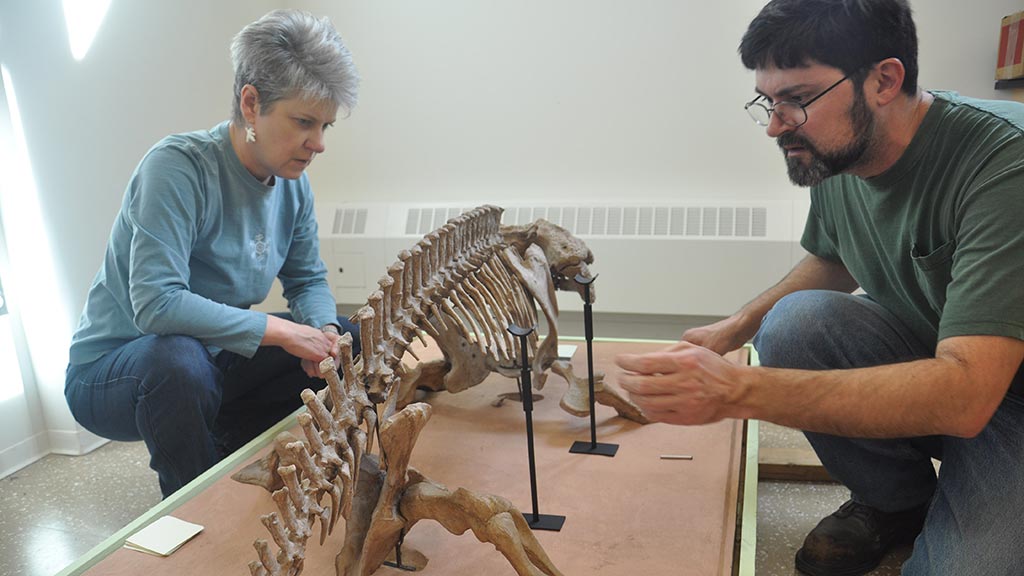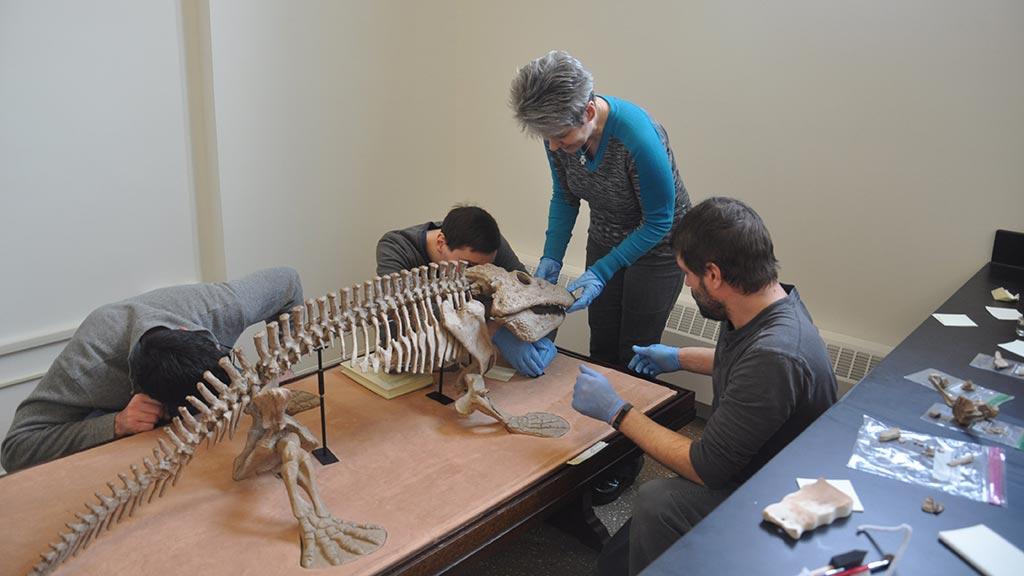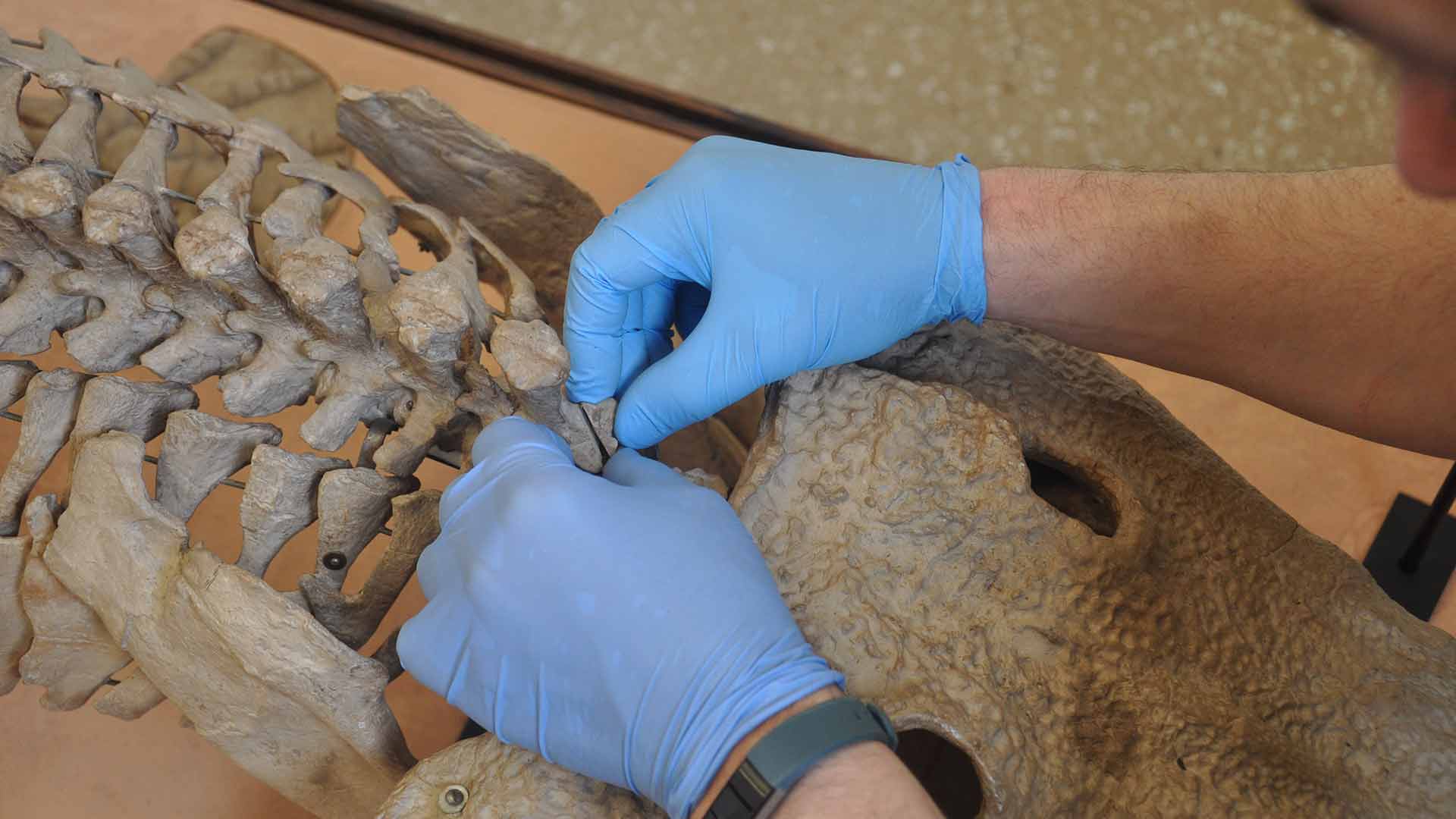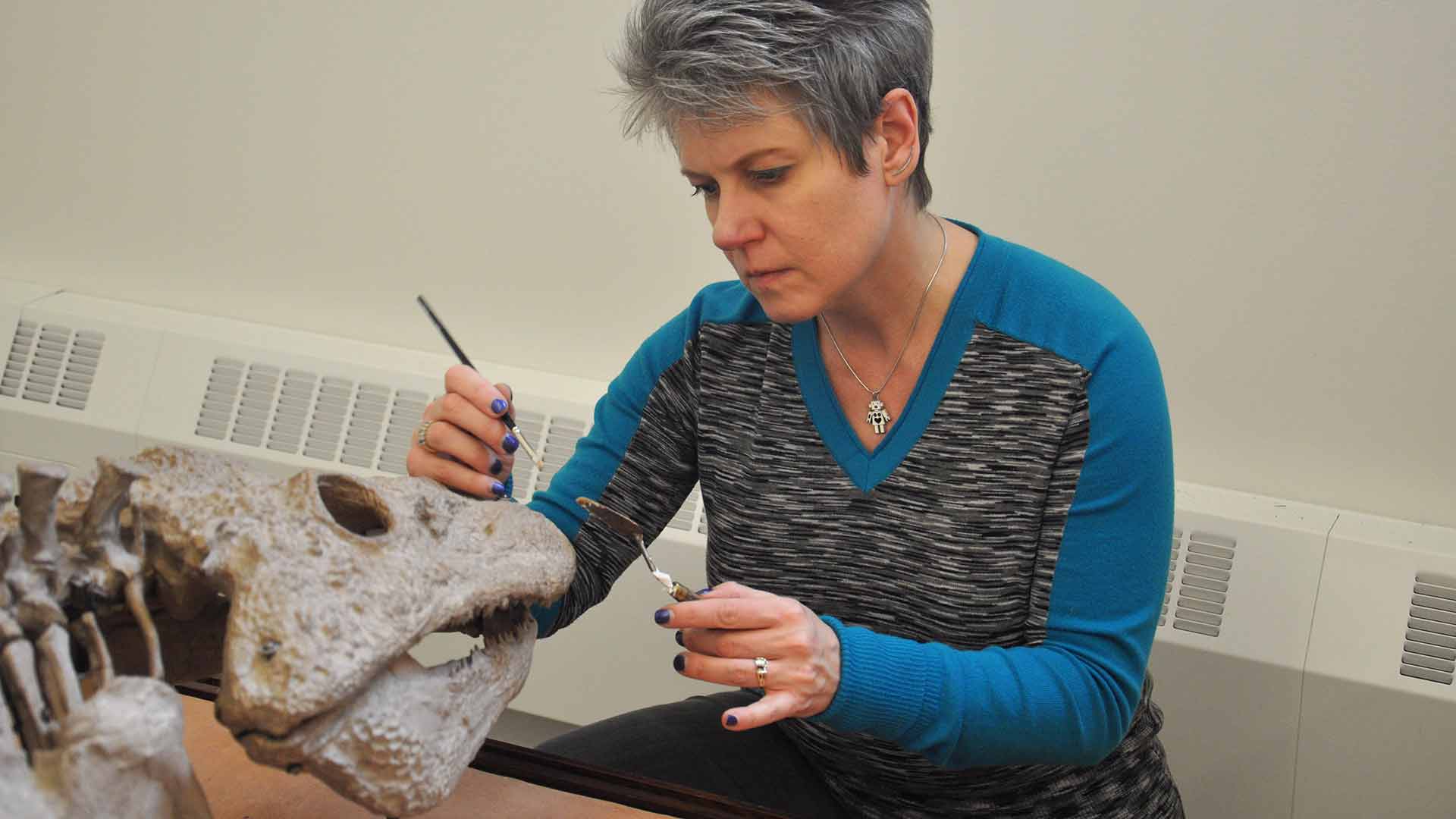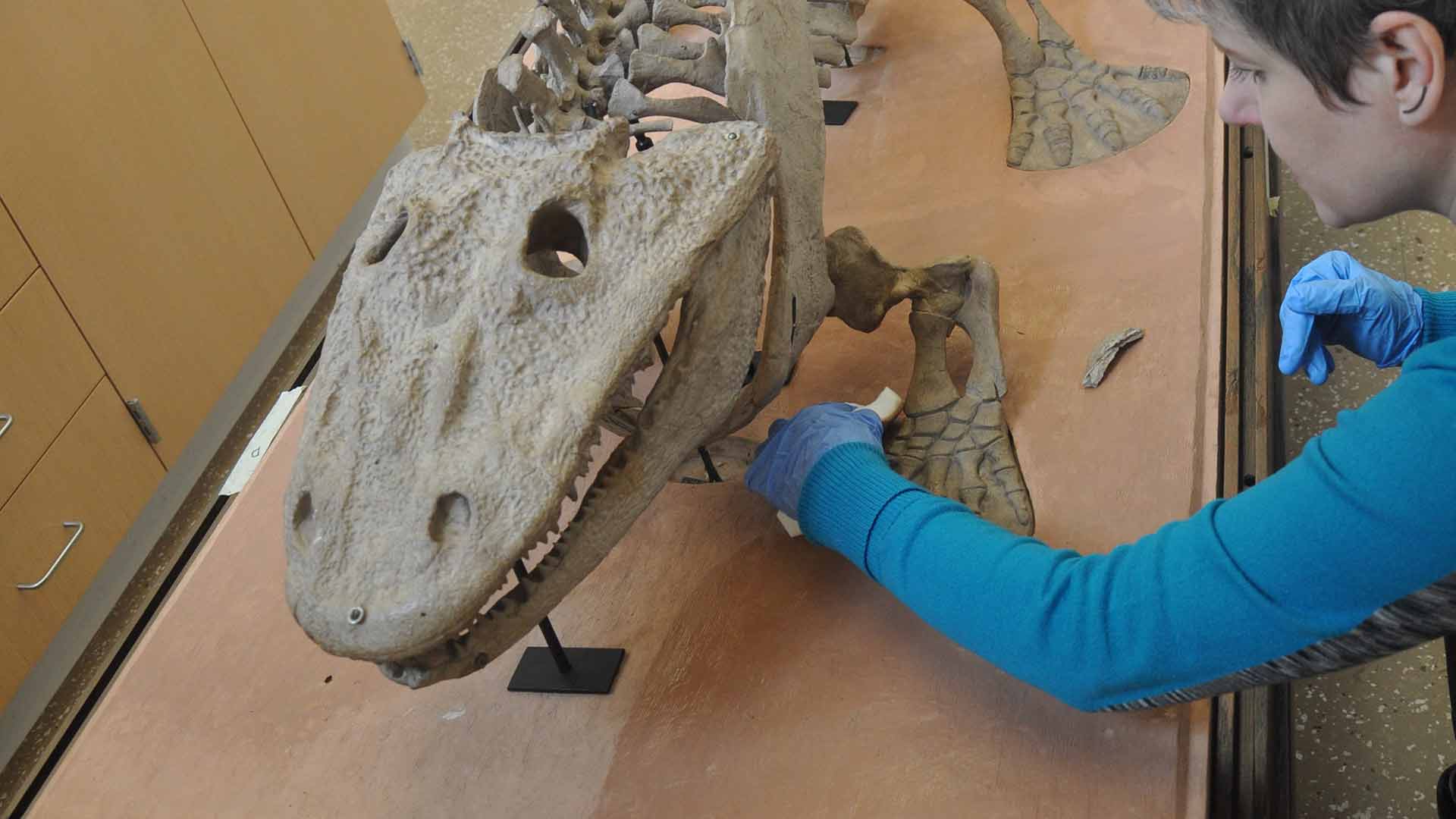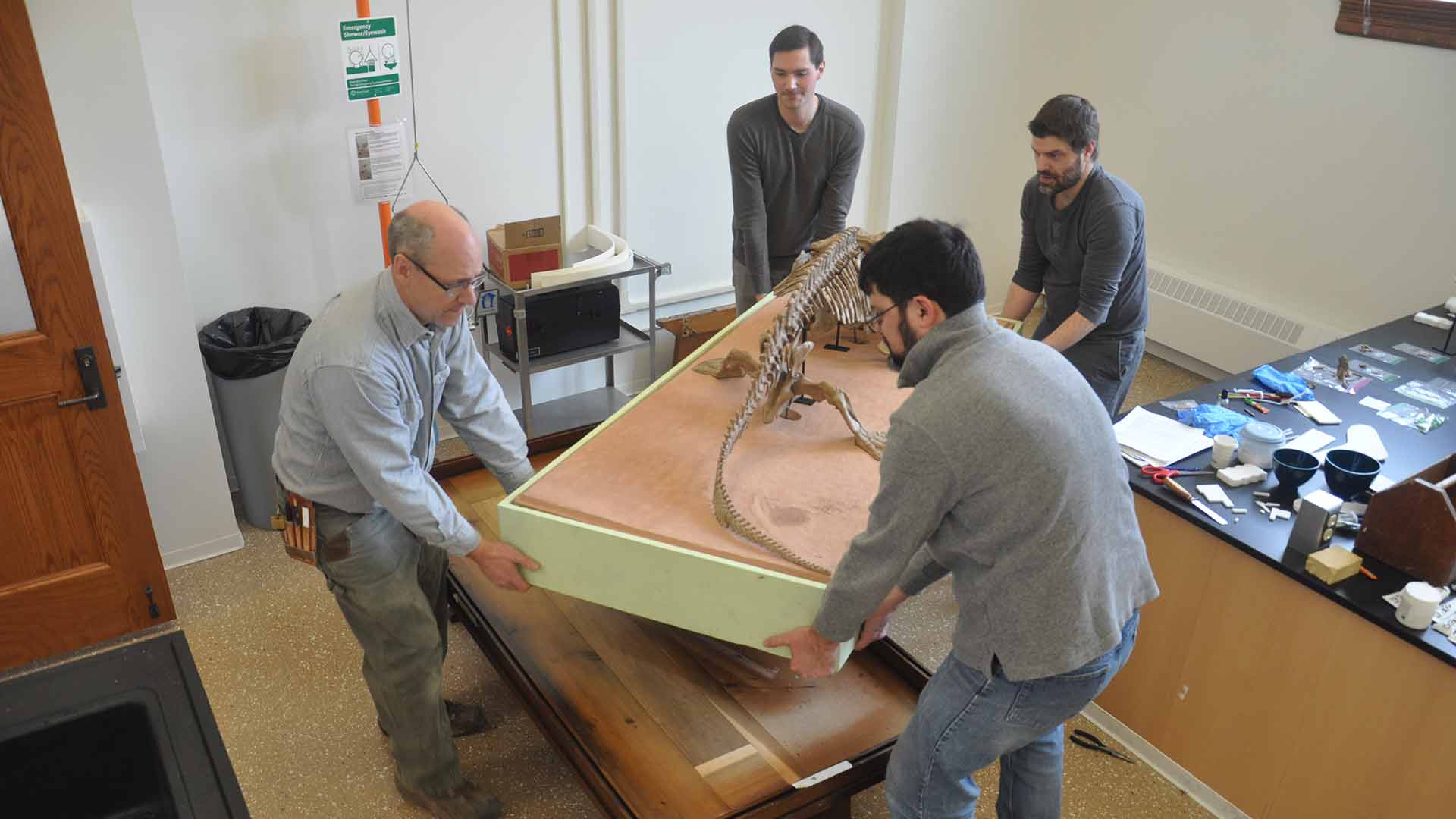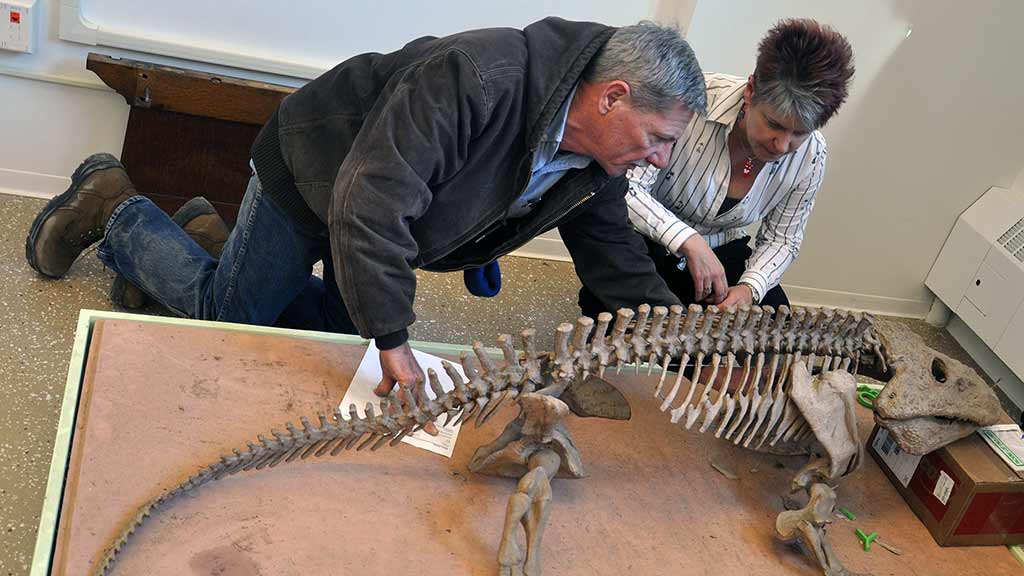
Em-BRACING Eryops
- Post Date: 6/18/2019
- Author: Gavin Robinson & Christa Deacy-Quinn
- Reading Time: 3 minute read
A year has gone by, but that’s not long for the plaster cast of this 300-million-year-old eryops. In Part 1 of this three-part blog series, we highlighted how Spurlock worked with the Illinois Geology Department and University Facilities & Services (F&S) to design new mounts for the large piece. This time around, we installed support mounts, moved eryops onto a new wooden base, and cleaned it in preparation for display.
F&S brought the three adjustable mounts they designed to brace the plaster. A dense foam padding was adhered to the metal mounts to cushion the contact points with the plaster. One mount was placed under the head, one near the front legs, and one at the back legs to support the posture of eryops. These mounts were secured to the platform using glue, which ensures the stability of the plaster.
After securing the mounts, Collections Manager Christa Deacy-Quinn and Natural Sciences Laboratory Technician Jared Thomas worked on repairing damaged areas of the eryops plaster.
The platform under the eryops plaster then needed to be cleaned. Many years of embedded dust were carefully removed using a specialized sponge designed for delicate surfaces.
Lastly, the newly repaired, supported, and cleaned eryops and platform were moved onto a wooden base. This base will be used in the plaster cast’s final display location in the Natural History Building.
A big thank you to University of Illinois Geology (external link) Head Tom Johnson, School of Earth, Society, and Environment (external link) Associate Director for Operations Scott Morris, Natural Sciences Laboratory Technician Jared Thomas, and the Facilities & Services (external link) team for working with us on this project! Stay tuned for the final part of this blog series: Eryops’ finds new home in the Natural History Building!
-
- Share:
- Subscribe to Newletter
- Giving
